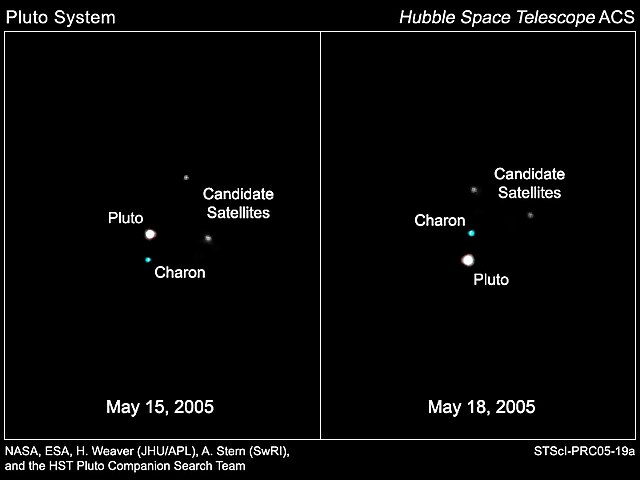Nix is a natural satellite of Pluto, with a diameter of 49.8 km (30.9 mi) across its longest dimension. It was discovered along with Pluto's outermost moon Hydra on 15 May 2005 by astronomers using the Hubble Space Telescope, and was named after Nyx, the Greek goddess of the night. Nix is the third moon of Pluto by distance, orbiting between the moons Styx and Kerberos.
Enhanced color image of Nix, taken by New Horizons
Discovery images of Nix and Hydra
Hubble image of Pluto's moons (annotated)
Nix half illuminated, imaged by New Horizons
The dwarf planet Pluto has five natural satellites. In order of distance from Pluto, they are Charon, Styx, Nix, Kerberos, and Hydra. Charon, the largest, is mutually tidally locked with Pluto, and is massive enough that Pluto and Charon are sometimes considered a binary dwarf planet.
Charon and Pluto, to scale. Photo taken by New Horizons on approach.
The Hubble discovery image of Nix and Hydra
Discovery image of Styx, overlaid with orbits of the satellite system
Formation of Pluto's moons. 1: a Kuiper belt object approaches Pluto; 2: it collides with Pluto; 3: a dust ring forms around Pluto; 4: the debris aggregates to form Charon; 5: Pluto and Charon relax into spherical bodies.







